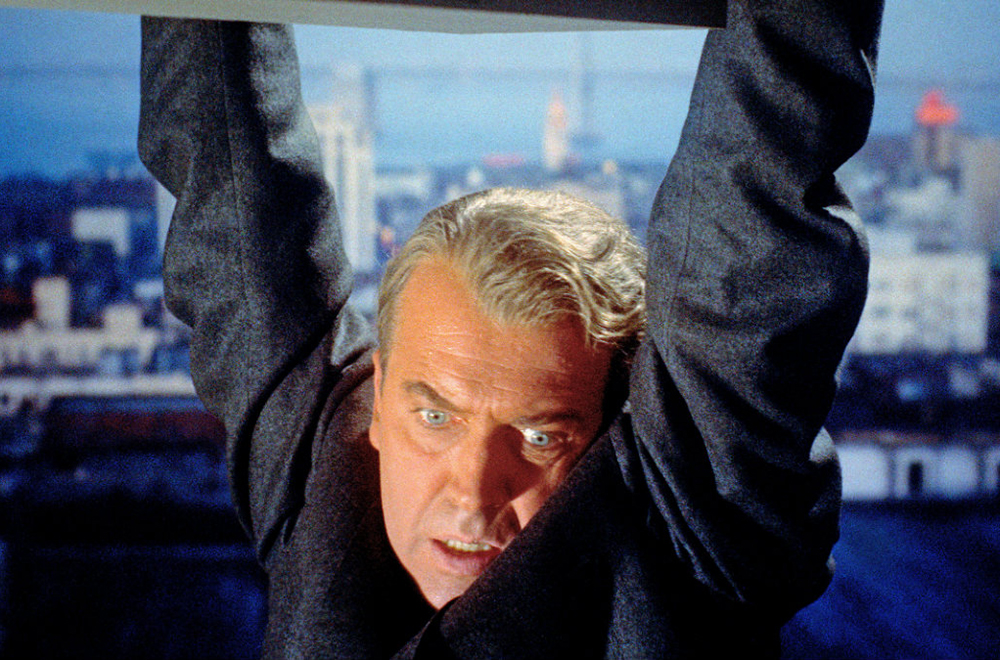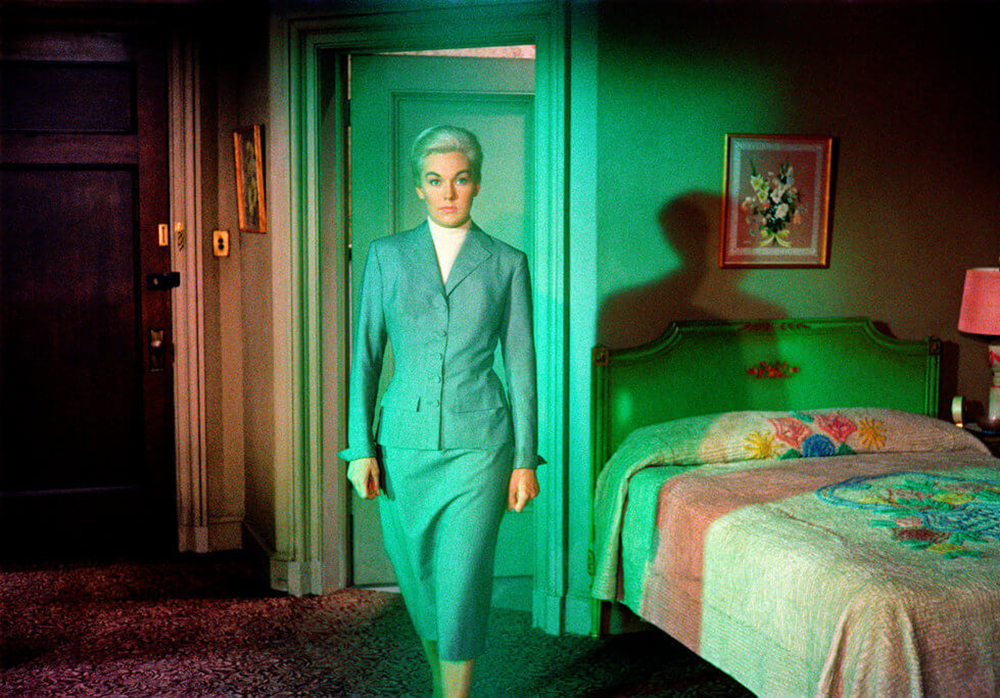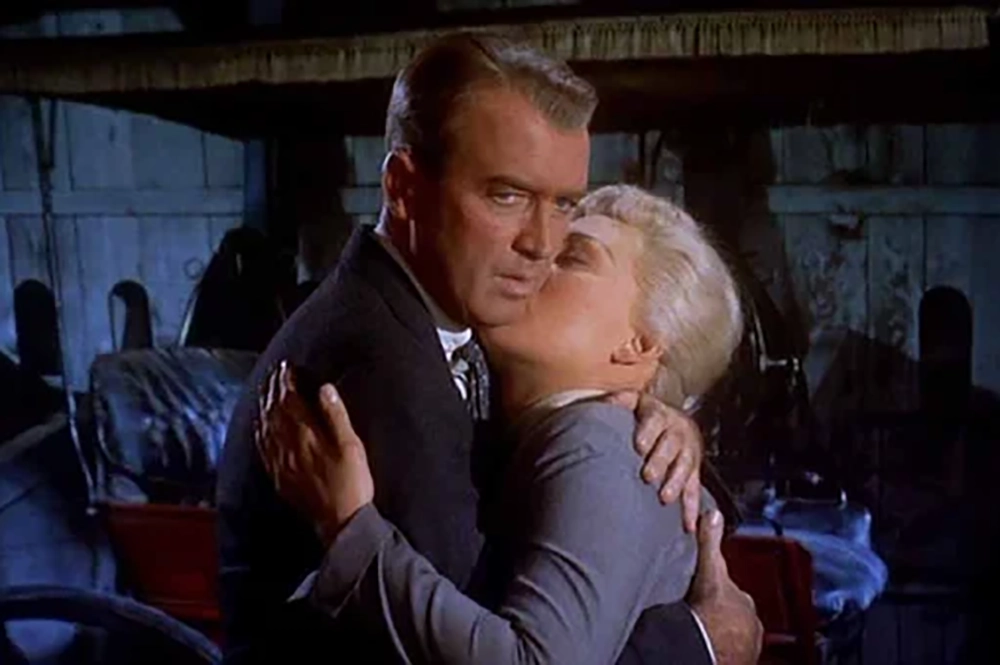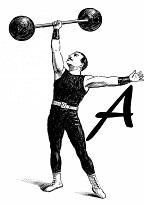After a reeling 3-minute intro of the cast members’ names, the plot opens up with a police chase of a criminal across rooftops. The criminal is being pursued by our protagonist, John Ferguson or “Scottie” (James Stewart) and his fellow patrol officer. Hitchcock wastes no time in revealing Scottie’s acrophobia to the audience as his partner falls off the roof to his death during one of his episodes. Haunted by feelings of guilt and inadequacy, Scottie quits the police force of his own conviction. He spends his time unemployed either at home or at the home of his ex-fiancée and now best friend, Midge Wood (Barbara Bel Geddes).
From Private Investigator to Lover
Hitchcock stays true style, as the audience need not question nor confuse Midge’s role in the film. Whilst Midge wearing glasses reinforces Alfred’s recurring premise of ‘sight,’ it equally turns the audience’s attention away from her as a potential love interest for our protagonist. She isn’t the quintessential blonde-haired, hyper-feminist lead viewers have been conditioned by Hitchcock to anticipate.
This is further reiterated when Midge recreates a jarring version of the “Portrait of Carlotta” by replacing Carlotta’s face with her own — an image that doesn’t sit right with Scottie, let alone the audience. It’s then that Madeleine, (Kim Novak) a supposed descendant of Carlotta and the wife of Scottie’s friend, Gavin (Tom Helmore) is introduced into the plot. Madeleine’s blonde hair and demure nature provide further proof that the female lead has made an appearance. Gavin seems worried for Madeliene, who’s said to be exhibiting strange, suicidal behaviour. This leads him to think she’s possessed by the spirit of her late great grandmother (Carlotta Valdes), who had committed suicide.

Gavin then hires Scottie to follow his wife to discover more about the case. However, the plot becomes complex when Scottie falls in love with the very subject he’s hired to watch. “Vertigo” is heavily reliant on the ‘male gaze,’ which, according to feminist theory, is described as the objectification of women for the benefit of the heterosexual male viewer. It’s shown when Scottie stares, unabashedly, at a half-naked Madeleine sitting by the fireplace after he thwarts her suicide attempt and takes her back to his house. He, like most male protagonists in Hitchcock’s works, is smitten with the blonde-haired woman. He hopes to save her as he failed to save his partner at the start of the film (classic guilty complex).
Suspense, Acrophobia, and Hitchcock’s ‘Male Gaze’
Unfortunately, a bitter history repeats itself as once again, his vertigo stops him for reaching Madeline in time at another suicide attempt and she falls off the bell tower to her death. Scottie is later diagnosed with chronic melancholia and is under hospital observation until his initial release. He continues to visit all the places that Madeline had once been, and tries to look for visual resemblance in various women he sees — be it the colour of her hair or the way she dressed. What he hadn’t bargained for was running into a woman from Kansas named Judy, who despite speaking coarsely and being a brunette, was the striking image of his lost love, Madeline.
The audience later learns that Judy was in fact Scottie’s Madeleine, having been an actress hired by Gavin to play his wife in an elaborate murder scheme. Mrs. Elster was in fact killed by her husband, who threw her body thrown off the bell tower for Scottie to witness her ‘suicide.’

This plot twist cleverly disarms the male gaze as the one that was really watching was Judy all along. When Scottie sought her out, her initial reaction was to dismiss him for fear of being caught; but blinded by love, she decides to go out with him. Scottie isn’t satisfied, however, with this version of his Madeline and wants everything to be perfect. He picks out Judy’s clothes, makes her dye her hair and even teaches her to speak and act like Madeleine. What had once been a sweet love story turns into a sinister obsession.
A Film that Begs Further Interpretation
Bernard Hermann’s musical score here combines a sinister feel with nostalgia as the camera pans in circles around them, with the backdrop of familiar places he had once gone with his beloved Madeleine. At this very point, Hitchcock encapsulates the very essence of why the movie is called “Vertigo” — as in his roundabout way, Scottie has successfully moulded Judy to be his Madeleine, completely disregarding her opinions on the matter. Despite initial resistance, Judy decides she’s willing to be this version if that’s what it takes for him to love her. She subjects herself to his vision — the very sight and sound he yearns for.
Everything seems to be going well until Judy makes the mistake of wearing a necklace similar to the one Carlotta wore in the painting. This tiny slip up unravels all the lies as Scottie discovers he’s been tricked. She has not been moulded by him but by another man — Gavin. The loving, gentle nature in which he handles her is long gone as he drags her up the bell tower to the scene of the crime. He had not been able to get there when Mrs. Elster died, but he was determined to do so now.
A Hard Cure for a Fear of Heights

There seems to be many reasons why Scottie had done this, which makes its interpretation quite subjective. Was it a final feat to cure his acrophobia? Did he want to put an end to his obsession with Madeleine? Or was it purely male pride? Either way, he finally makes it to the top and Judy confesses her part in Gavin’s schemes, alongside her undying love for Scottie. It appears there may be hope for our twisted couple after all when Scottie pulls Judy into an embrace. A nice ending of love conquers all — but it’s not what Hitchcock had in mind. A nun appears from the shadows, startling Judy, which causes her to miss her step and fall to her death in the exact way Mrs Elster’s body was found. The movie ends with Scottie looking down at her dead body seemingly cured of his acrophobia.
In an unexpected turn of events, Hitchcock throws a veil over the male gaze for a moment by allowing the audience to know about Judy’s role before Scottie. We are given insight into Judy’s (a woman’s) pain and guilt, which seems out of turn for the stereotypical Hitchcockian movie. He cleverly intertwines three different storylines in the movie without any fear of its unravelling. The first being told from the supernatural angle of possession, the second being our protagonist’s obsession and the third, our hopeless romantic who disarms the male gaze and falls to her death in doing so. Whilst Hitchcock’s fetish of objectifying women in his movies may prove strange and controversial, it is difficult to disregard a brilliant filmmaker when you see one.
“Vertigo” is currently available to rent or stream from most streaming services.



